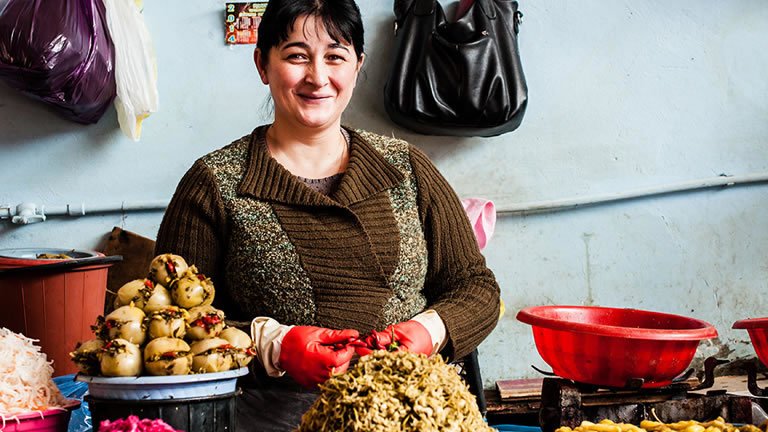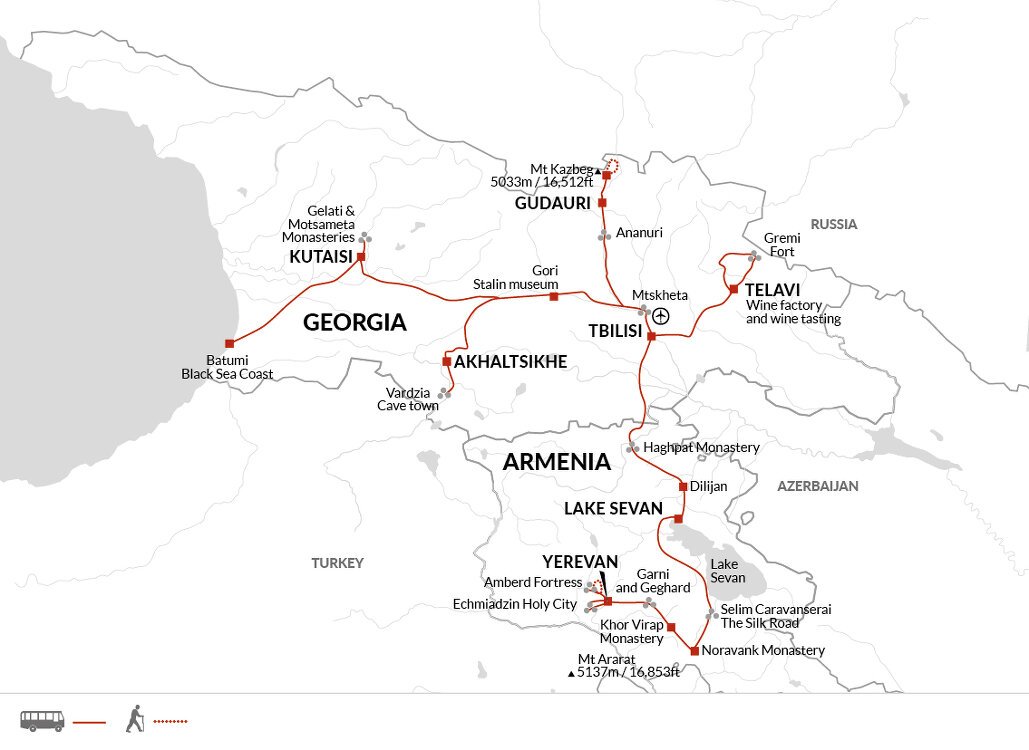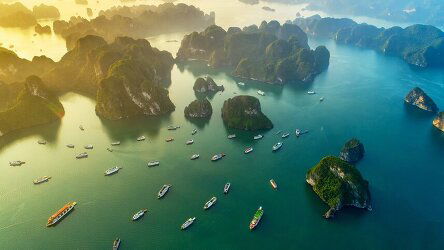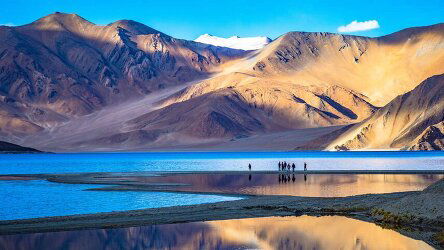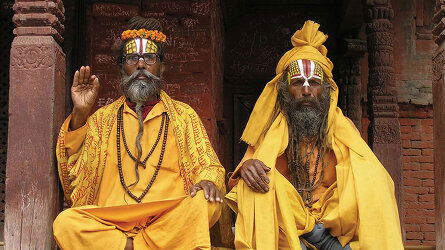Overview
Itinerary
Our tour starts today in Yerevan, the capital of Armenia. Here, grand Soviet-era architecture rubs shoulders with traditional coloured-stone buildings, against the dramatic backdrop of the fabled Mount Ararat.
For those arriving in time, we'll meet in the hotel reception at 6pm for a welcome meeting with our tour leader. There are no other activities planned today, so you're free to arrive in Yerevan at any time (note, hotel rooms are not available until after 2pm).
If you'd like to receive an airport transfer today, you'll need to arrive into Zvartnots International Airport (EVN), which is a 30-minute drive from the hotel. If you miss the welcome meeting, our tour leader will inform you of any essential information at 9am on day 2.
If your flight arrives earlier in the day, you might like to visit the History Museum of Armenia (which has a 5500-year-old leather shoe in its collection) or sample a freshly baked 'gata' (a traditional Armenian pastry) while soaking up the relaxed atmosphere of this unique city.
Whilst in the capital, you might also like to catch a performance at the Armenian National Opera and Ballet Theatre - if you'd like to add on extra days in Yerevan before our tour starts, contact us to book accommodation.
When choosing your flights, keep in mind that our city tour starts right after breakfast on day two and the itinerary is full on. If you're landing in the early hours of Day 2, be prepared to dive straight into the adventure. Stay: Hotel Ani Plaza (Comfortable)
This morning, we'll travel out of the city to visit the 7th-century ruins of the UNESCO-listed Zvartnots. Its remaining columns are set against a magnificent backdrop of the snowy peaks of Mount Ararat. We'll continue on to the 'Holy City' of Echmiadzin, Armenia's former capital, where we'll visit another UNESCO-listed site, Echmiadzin Cathedral. We aim to arrive in time to coincide with part of the Sunday service.
Returning to Yerevan, and before continuing our city tour, we'll visit the Tsitsernakaberd Armenian Genocide Memorial Complex and its museum, an important and unmissable stop. We'll then make our way to the Cascade complex - a Soviet-period structure that resembles a giant stairway and houses a modern art museum. Stay: Hotel Ani Plaza (Comfortable) (B)
Today, we'll once again leave the city behind us as we drive east through a landscape of alpine meadows to the Hellenistic temple at Garni. This pagan monument, dedicated to the worship of the sun, was built in AD77 and is an extraordinary site to be found in Armenia, so far from the rest of the Hellenistic world. From the Garni River gorge, we'll take an easy walk up the temple. Along the way, we'll see the striking basalt rock formations that make up the towering walls of the gorge.
We'll then continue to the nearby UNESCO-listed Geghard Monastery, found in a beautiful location surrounded by mountains. Partly made up of caves and partly built from local stone, this tranquil monastery dates from the 4th century and houses two main churches decorated with impressive well-preserved carvings and a fountain of spring water alleged to have rejuvenating properties.
On our return to Yerevan, we'll continue to see the expansive Republic Square before taking some time to wander through the lively open-air Vernissage craft market. Stay: Hotel Ani Plaza (Comfortable) (B)
Today we’ll head northwest to visit the Amberd Fortress, a 10th-century fortress on the slopes of Mount Aragats. En route, we’ll stop to visit Alphabet Park, a tribute to the complexity and uniqueness of the Armenian language. Finally, we’ll arrive at the fortress, which sits 4090 metres above sea level. Its construction began in the 7th century and continued into the 11th. It’s surrounded by cliffs on three sides, which provided protection until Tamerlane managed to sack it in the 14th century.
Afterward, we’ll head towards Oshakan village, where a local family invites us into their home to see how they bake traditional Armenian flatbread known as 'Lovash'. We’ll then enjoy a lunch prepared with this freshly baked bread, before returning to the city. Back in Yerevan, we’ll have time to visit the remarkable Matenadaran Library, which houses over 17,000 rare manuscripts. Stay: Hotel Ani Plaza (Comfortable) (B/L)
We'll depart Yerevan today and travel south through the vast plains of Ararat to visit the Khor Virap Monastery. Mount Ararat is a constant companion on the horizon and as we start approaching the mountains, the plains give way to undulating hills. We'll pass through the wine-making village of Areni, where we'll stop at a local winery to taste the best wine in Armenia. Continuing on our way, the scenery becomes more mountainous, and we'll head into a spectacular gorge where we'll make a stop at the picturesque Noravank Monastery, taking pride of place in a lofty position overlooking the gorge below.
After a break here for lunch, we'll climb higher making our way over Selim Pass (2410m) where we'll catch wonderful views of the mountains and Alpine meadows, which are covered in wildflowers in the spring. As Selim Pass was once part of the Silk Road, we can find the remains of a caravanserai here, where travellers would find food and shelter on their journey. The road then starts a descent and once again we'll pass through villages, eventually catching our first glimpse of the expansive waters of the beautiful Lake Sevan with its backdrop of mountain peaks. Located 1900 metres above sea level, Lake Sevan is famous for its ever-changing hues, and depending on the weather the colour of the water can range from a deep steely blue to a stunning turquoise. This huge body of water is the largest lake in the Caucasus region covering an area of 940 square kilometres, and one of the largest fresh-water, high-altitude lakes in the world. We'll have the chance to walk up to Sevanavank Monastery, where, from its high position, we'll gain a different perspective of the lake. Our hotel for tonight sits on the banks of the lake itself. Stay: Blue Sevan (Comfortable) (B/L/D)
Today we'll head to the Armenia/Georgia border at Sadakhlo, driving via hills and valleys covered in pine trees. In the picturesque town of Dilijan, we'll walk through a museum street, which has preserved houses dating back to the 18th century with typical fretwork wooden balconies as well as local handicraft studios. The scenery changes again and becomes more dramatic as we drive past towering escarpments and into the copper mining area of Armenia. Our final stop is the Monastery of Haghpat, listed by UNESCO thanks to its outstanding ecclesiastical architecture.
Crossing the border in the afternoon, we'll wave goodbye to our Armenian tour leader, meet our Georgian tour leader and head straight to the capital, Tbilisi. On arrival, there might be time for a stroll up to the Narikala Citadel to take in the views over the city or to dip into a relaxing sulphur bath (which Tbilisi is famous for). Tbilisi has a lively dining, nightlife and social scene, a far cry from the days of the Soviet era. The capital's beauty lies in the melting pot of architectural styles spanning from Persian to Medieval, brutal constructivist buildings sit next to shiny skyscrapers and western-inspired neighbourhoods. Stay: Hotel KMM (Comfortable) (B)
After breakfast, we'll set off on foot to explore the eclectic Georgian capital. Tbilisi is both an ancient and cosmopolitan city; you can find a synagogue, a mosque, a Georgian basilica, an Armenian church, and a Zoroastrian Fire-Worshipper's temple all within a 15-minute walk of one another.
Our orientation tour takes us first to the important Church of Metecki and through the picturesque Old Town, the Sioni Cathedral and then on to the fascinating State Museum. Afterwards, we'll enjoy panoramic views of the whole town at the 4th-century Narikala fortress before we walk back to the city centre via the historical domed sulphur bath area.
This afternoon, there's plenty of time free to explore the city at your own pace. You might like to take a backstage tour of the Rustaveli Theatre or wander through the narrow streets of the Old Town, perhaps finding a quirky café to pass the time in. A walk over the architecturally striking contemporary Peace Bridge is also a must. Stay: Hotel KMM (Comfortable) (B/D)
Leaving the capital this morning, we'll drive to picturesque Mtskheta, the spiritual heart of Georgia. Here, we'll visit the 6th-century hilltop Jvari Monastery where we'll have spectacular views of Mtskheta and the confluence of two rivers below. We'll make our way down into the town to visit Svetitskhoveli Cathedral. The 11th-century basilica contains the grave of Sidonia, who was said to have been buried holding Christ's robe.
Afterward, we'll head further west, snaking through the beautiful Imereti villages that dot the landscape. We'll stop in Kaspi to visit a traditional winery and sample some of the Georgian bio-wines that are produced here (a real treat, these differ greatly from the more famous wines found in eastern Georgia). This place is the perfect example of how the younger generation continues the tradition left by their ancestors. We'll learn about the history of wine making and get to taste the natural wines made from unique grape varieties that were on the verge of extinction, just a few years ago.
Arriving in Kutaisi, the ancient capital of the Kingdom of Colchis, we'll check in at our guesthouse for a two-night stay. For many years, when the Arabs occupied Tbilisi, Kutaisi was the capital of Georgia. Its golden age was the period between the reigns of King Bagrat and Queen Tamar (roughly 900-1200) and many of its significant buildings date from this time. Now, it's the main city of the Imereti region and the people here are renowned for their sense of humour. Kutaisi is also home to a special kind of 'khachapuri' - the delicious cheese bread that's unique to Georgia. Stay: Kutaisi Inn (Comfortable) (B/D)
We'll set off for Batumi this morning, Georgia's attractive summer capital that sits on the shores of the Black Sea.
A renovation and regeneration project at the turn of the century transformed the city's skyline, now a kaleidoscope of skyscrapers and sculptures, contrasting the charming 19th-century buildings, set against a backdrop of the surrounding mountains.
We'll start our exploration in the Old Town, walking through European Square and Piazza Square, home to classic architecture that features mosaics, stained glass windows, clock towers and churches. After lunch, we'll move on to the more modern seafront, where a stroll along Batumi Boulevard lets you take in the modern skyscrapers, dancing water fountains and the moving metal sculpture of Ali and Nino.
After some free time at the end of the city tour, we'll return to Kutaisi in the late afternoon (approximately a three-hour journey). Stay: Kutaisi Inn (Comfortable) (B)
Today starts with a visit to the local farmer's market. We'll then drive to the magnificent UNESCO-listed monastery complex at Gelati, which includes an Academy that employed some of Georgia's greatest thinkers. It was founded in 1106 by King David the Builder in gratitude to God for his victories over the Turks. The King wanted it to serve as a centre of Christendom, so as well as scholars many religious artists studied here. Many of the treasures which were made here have been lost over the centuries, however, the buildings and frescos inside are extremely well preserved, and the setting of the monastery, on a hillside with views over to the distant Caucasus peaks, is photo-worthy.
After our visit to the complex, we'll continue our drive south, travelling via the turquoise-roofed Bagrati Cathedral, the Borjomi Mineral Water Park and through the majestic forests of the Borjomi Gorge, where we'll stop to taste the sulphurous water that's believed to have healing properties.
Our day's journey ends in Akhaltsikhe, a charming town which translates literally to 'new fortress', (although ironically there isn't much that's new about this 12th-century town). The skyline is dominated by the imposing Rabati castle, its old streets are home to a large Armenian population, and the forests just outside the town hide the beautiful 10th-century Saphara Monastery. We'll have some free time later this afternoon to explore Akhaltsikhe. Stay: Lomsia Hotel (Comfortable) (B/L)
Today we'll head towards one of Georgia's most significant sites, the cave town of Vardzia. On route we'll stop off at Khertvisi Fortress, dramatically situated on a cliff above the confluence of two major rivers. It's one of the oldest fortresses in Georgia, dating back to the 2nd Century BC.
We'll continue our drive through a remote and beautiful landscape of rolling hills, with mountain peaks on the horizon and pine trees occasionally standing like sentries along the sides of the road. Vardzia itself is cut into a towering cliff and was established as a stronghold against the Turkish Sultanate (the Turkish border is only 10 kilometres away) by King Giorgi III in the 12th century. Vardzia was subsequently developed by his daughter, Tamar (later to become Queen Tamar), who created a cave monastery that became a centre of Georgian culture. This network of caves above the Mtkvari (Kura) River once numbered 3000, with up to 19 tiers in some places. Much of it was destroyed after a huge earthquake in 1456 and only 550 caves have been discovered since. There are numerous churches, meeting halls, refectories, and wine cellars, all interconnected by tunnels and stairways. We'll have time to explore and navigate our way around this fascinating place before returning to Akhaltsikhe. Stay: Lomsia Hotel (Comfortable) (B/D)
This morning we'll set off for our journey to Gudauri. We'll stop at the Soviet-style town of Gori, where Georgia's most famous son, Stalin, was born. Here, we'll visit the museum and learn about his life. Interestingly, Stalin initially began training as a priest in the Georgian Seminary before abandoning religion to become a brigand and join the new Bolshevik movement. It's been suggested too that Georgia escaped the worst horrors of Stalin's regime because he was afraid of his conservative Christian mother.
En route, we'll pay a visit to the Ananuri Fortress overlooking a reservoir on the Aragvi River. We'll then continue to head north into the mountains. The scenery becomes more dramatic as we ascend along the Georgian Military Highway. We'll drive through the spectacular and breathtaking mountain scenery of the Greater Caucasus as we make our way to Gudauri (2196 m), a winter ski resort overlooking an epic gorge, for a two-night stay. Stay: Hotel Gudauri Hut (Comfortable) (B/L/D)
North of Gudauri, the Kazbegi region is a picturesque area, with alpine meadows and towering snow-capped mountains. We'll make an early start this morning as we plan to hike from Stepantsminda town through Gergeti village and up to the iconic 14th-century Church of the Holy Trinity, located at 2710 metres above sea level, on a hilltop overlooking the snowy peaks of the Caucasus Mountains. The circular walk covers seven kilometres wand it should take us around three to four hours to complete. If you'd rather not take part in the hike, you can take a local taxi.
The area is a treasure trove of mythology - Prometheus was chained to the majestic Mount Kazbegi (5047m), the highest peak in this region. This part of the Caucasus is also a protected area and is home to a variety of flora and fauna. Georgia has over 100 different mammals, and, although the European bison and Caucasian leopard have become extinct, there are still wolves and bears in the mountains. Stay: Hotel Gudauri Hut (Comfortable) (B)
This morning we'll leave the mountains behind and drive to the Kakheti region which is famous for its wineries as well as its warm hospitality.
Our first stop is Vardisubani village. Here, we'll learn all about the unique wine making technique that Georgians have used since ancient times and attend a masterclass in making a Qvevri clay vessel. Afterwards, we'll visit a traditional wine cellar in the village of Kondoli. The host has a special love for wine, which is reflected in the quality of the wine he produces. We'll enjoy a tipple of the most distinctive natural wine "Zhghia" which is made from the rarest and highest quality Kakhetian grapes.
Finally, we'll continue to the charming town of Telavi where we'll stay overnight in a guesthouse. Stay: Hillside Resort Telavi (Simple) (B/D)
Today our first stop will be Telavi's farmer's market. We'll then move on to the 11th-century Alaverdi cathedral, the tallest monastery in Georgia, surrounded by a beautiful cypress grove, and finally to the 16th-century monumental Gremi Fortress.
For lunch we'll enjoy a feast laid on by a local farmer in his home. We'll have the unique opportunity to try delicious, traditional Georgian cooking and get a taste of local produce harvested right from the host's garden.
In the afternoon, we'll return to Tbilisi for our final night. Stay: Hotel KMM (Comfortable) (B/L)
There are no activities planned today, so you're free to depart from Tbilisi at any time. If your flight is departing later in the day luggage storage facilities are available at our hotel. If you'd like an airport transfer, you'll need to depart from Tbilisi International Airport (TBS), which is a 25-minute drive from the hotel.
If you haven't seen enough of the Georgian capital, you can add extra nights onto your tour. Please contact us to book additional accommodation. The Blue Gallery, Dry Bridge extraordinary flea market and the Botanical Garden are just some of the highlights you might like to explore. (B)
Trip Inclusions
- A two week journey through the wonders of Armenia and Georgia where Europe and Asia meet
- Stay in the shadow of Mount Ararat and uncover Armenia's tempestuous history
- Visit Georgia's diverse cultural sites from churches to cave cities
- Full on paced trips are for travellers who like their holidays packed with activities and experiences, moving on quickly from place to place with lots of early starts and long, busy days. Some may find them tiring, but others get a buzz from packing their precious holiday-time as chock-a - block full of new experiences as possible.
- Accommodation, itinerary and inclusions subject to change.
- Price is for land, cruise and internal flights as specified. Flights not specified are not included
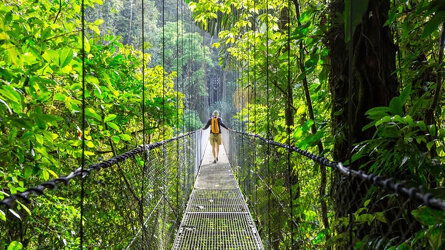
Launching in 1981, Explore offer trips from over 130 countries - from classic small group tours. Read more
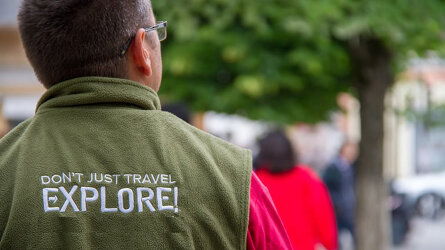
Explore's leaders are more than just your typical guide. They're your local expert are are passionate about sharing their expertise with you. Read more
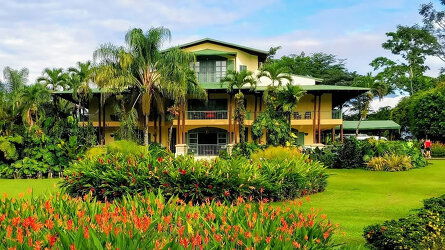
The places Explore stay are every bit as important as the sights they visit and the things you do. Read more
Trip Reviews (1) Most Recent 'The Best of Georgia & Armenia' Reviews
This is graded as a "full on tour" and that is certainly the case. We saw and did a lot, every day was filled with new experiences. I didn't really have any time for shopping! Early September was very hot: 35C every day which made the uphill walking even harder!
I would not recommend this tour to anyone who has knee problems (we did a lot of walking, especially uphill on uneven ground) or back problems (lots of potholes on roads in both countries, very windy roads up to mountain areas) . Booking with Georgie is always seamless as she provides very prompt, professional and friendly service.
Brochure

Explore Small Group Adventures (2024-25)
Availability
A definite departure means minimum numbers have been reached for this departure to operate. Your Global Journeys Travel Advisor will check the availability of your departure date when you enquire. Additional savings may apply. We guarantee the lowest price in Australia. T&C’s apply.
Tour & cruises prices are per person. Prices shown have savings applied, are subject to availability and may be withdrawn at any time without notice. Pricing and trip details are correct at this point in time, however are subject to confirmation at the time of booking and are subject to change by Explore. For cruise itineraries, cabin images are sourced from Explore. These should be treated as indicative only. Cabin inclusions, upholsteries and room layout may differ to the image(s) shown depending on the ship selected and your sailing dates.
